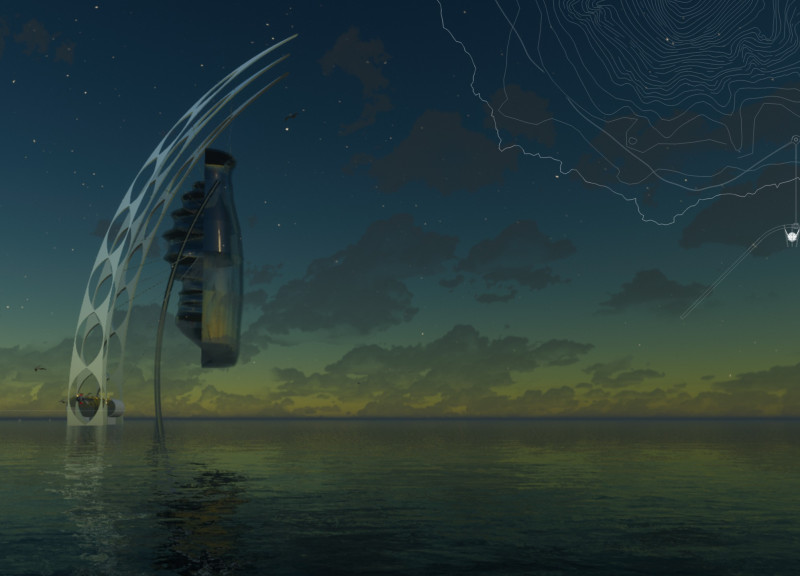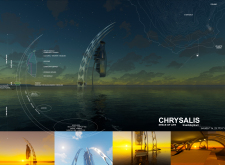5 key facts about this project
The primary function of the project is to serve as a communal hub, integrating various aspects of daily life. This includes housing units, cultural spaces, marketplaces, and work environments, offering a diverse range of services for its inhabitants. The layout promotes connectivity between different sections, allowing for seamless movement and interaction among community members.
Designing with sustainability as a core principle, "Chrysalis" utilizes eco-friendly materials and employs innovative construction techniques. The architectural form reflects organic shapes, mimicking natural elements. This approach not only enhances the aesthetic value of the project but also contributes to wind resistance and thermal efficiency.
Unique Design Approaches
One key aspect of the "Chrysalis" project is its focus on a circular economy. Integrating systems for recycling, composting, and energy generation enhances its self-sufficiency and reduces environmental impact. This design fosters an understanding of resource management and encourages the local community to engage with sustainable practices.
The project also features a floating design that interacts with the surrounding water environment. This architectural choice not only serves aesthetic purposes but facilitates activities related to harvesting marine resources and promotes research in sustainability. The emphasis on water as a design element allows for a continuous connection between residents and the natural landscape.
Integration with Local Context
The project emphasizes the importance of local materials, potentially incorporating natural stones and eco-friendly composites sourced from the surrounding area. Such material choices not only align with ecological principles but also create a sense of identity that reflects the region’s heritage.
The architectural layout includes various communal areas, such as health facilities, markets, and space modules for cultural expressions. These elements work together to promote social interaction while accommodating diverse needs within the community. The design offers flexibility to adapt residential units based on shifting demands, ensuring long-term viability.
For further details on the "Chrysalis: Space of Life" project, readers are encouraged to explore the architectural plans, architectural sections, and architectural ideas that elaborate on its innovative design. By understanding the comprehensive layout and its unique components, one can appreciate the full scope of this thoughtful architectural undertaking.























